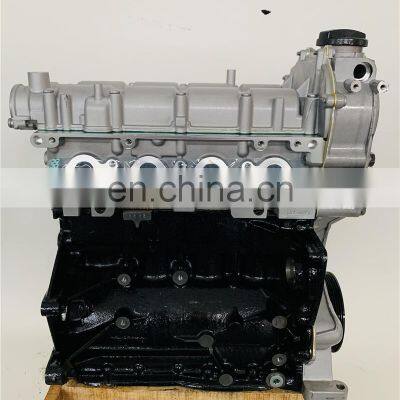Trust a premium clp engine for heavy-duty use.
Trust a premium clp engine for heavy-duty use.
Blog Article
Just How a Clp Engine Can Improve Effectiveness in Different Industries
The arrival of CLP engines notes a significant shift in functional effectiveness across numerous industries, driven by their capability to enhance gas consumption and reduce downtime. Industries such as production and logistics stand to get considerably from their durable style and regular power output, which guarantee to streamline operations and improve performance. As organizations significantly prioritize sustainability along with performance, the role of CLP engines becomes also more essential. What stays to be seen is just how these developments will certainly shape the future landscape of industrial operations and their effect on wider economic fads (clp engine).
Summary of CLP Engines
CLP engines, or Constant Liquid Propellant engines, stand for a significant development in propulsion modern technology, specifically for space applications. These engines utilize a continuous feed system that permits for the continual expulsion of propellant, bring about boosted effectiveness and efficiency compared to traditional solid or hybrid propulsion systems. By preserving a constant flow of fluid propellant, CLP engines can achieve much more accurate drive control, which is important for navigating spacecraft in various goal circumstances.
The layout of CLP engines integrates sophisticated materials and ingenious fuel administration systems. clp engine. This causes minimized weight and boosted dependability, crucial variables for long-duration space objectives. Moreover, the continuous operation decreases the threat of combustion instability, an usual difficulty in traditional rocket engines.

Benefits in Production
The production of Constant Liquid Propellant (CLP) engines provides numerous noteworthy benefits that improve both effectiveness and cost-effectiveness. One of the primary benefits is the streamlined production procedure, which reduces the intricacy associated with typical propulsion systems. By making use of liquid propellant, suppliers can attain better accuracy in engine efficiency, causing maximized power outcome and reduced waste.
Furthermore, CLP engines promote a higher level of modularity, permitting much easier assimilation right into various manufacturing lines. This versatility can substantially lower lead times and boost total operational versatility. The usage of CLP technology additionally has a tendency to reduce the demand for comprehensive upkeep due to less moving components, which translates right into lowered downtime and functional expenses.

Applications in Logistics
Leveraging Continual Fluid Propellant (CLP) engines in logistics supplies substantial benefits in functional effectiveness and dependability. These engines give a durable option for various transport needs, allowing the seamless motion of items across substantial distances. The inherent design of CLP engines permits consistent power outcome, which translates into smoother and a lot more foreseeable transport timetables.
One of the key applications of CLP engines in logistics is in durable freight transportation, where they can drive both ground and airborne automobiles. Their ability to keep high performance under varying load problems makes certain that delivery timelines are satisfied, therefore boosting consumer complete satisfaction. Furthermore, CLP engines can be integrated right into automated logistics systems, facilitating real-time monitoring and maximizing path preparation.
Additionally, the resilience of CLP engines minimizes upkeep downtime, allowing logistics companies to optimize their operational capacities. This is particularly advantageous in warehousing operations, where efficiency in managing and transporting goods is critical. As logistics remains to evolve, the integration of CLP engines represents a forward-thinking technique that not only enhances efficiency but also supports the sector's growing demands for dependability and my website speed.
Influence On Energy Efficiency
Just How do Constant Liquid Propellant (CLP) engines boost energy performance in transport? CLP engines use a constant flow of fluid fuel, enhancing burning procedures and maintaining a secure drive result. This layout minimizes energy losses related to conventional burning engines, where fuel shipment can vary and lead to ineffectiveness.
The constant procedure of CLP engines allows for a more like this effective thermal cycle, leading to greater details impulse compared to traditional engines. clp engine. This converts to minimized gas consumption for the exact same amount of job done, significantly reducing functional expenses throughout various transportation markets, including aviation and maritime sectors
Furthermore, the capacity of CLP engines to keep optimal efficiency under varying load problems reduces the demand for regular velocity and deceleration, additionally improving fuel performance. Boosted energy effectiveness not only adds to cost financial savings however likewise leads to reduce greenhouse gas discharges, straightening with worldwide sustainability objectives.
Future Trends and Innovations
Emerging developments in Continuous Liquid Propellant (CLP) engine modern technology pledge to reinvent the landscape of transport performance and sustainability. As markets pivot toward greener alternatives, CLP engines stand at the leading edge, integrating ingenious products and layout approaches that boost efficiency while minimizing ecological impact.
Among one of the most promising fads is the adoption of hybrid systems that incorporate CLP engines with renewable energy resources. This synergy can maximize fuel intake and reduce exhausts, straightening with global sustainability goals. In addition, advancements in computational fluid dynamics (CFD) are helping with the style of even more aerodynamically efficient engines, resulting in minimized drag and improved gas performance.
Moreover, the growth of smart tracking systems is readied to improve functional effectiveness. These systems utilize more information data analytics and IoT technology to optimize engine performance in real-time, making sure that the engines operate within their most effective specifications.
As study remains to discover alternate propellant formulas-- such as biofuels and synthetic gas-- the future of CLP engines looks appealing. By taking advantage of these developments, industries can not just boost their performance but additionally contribute considerably to a cleaner, extra lasting future in transport.
Final Thought
In verdict, CLP engines represent a substantial advancement in performance throughout several industries. The assimilation of sophisticated products and fewer moving components decreases upkeep demands, while alignment with sustainability objectives placements CLP engines as a crucial modern technology for the future.
Report this page